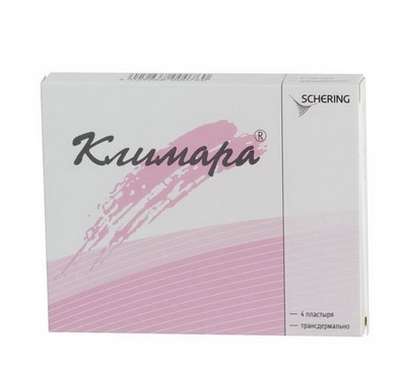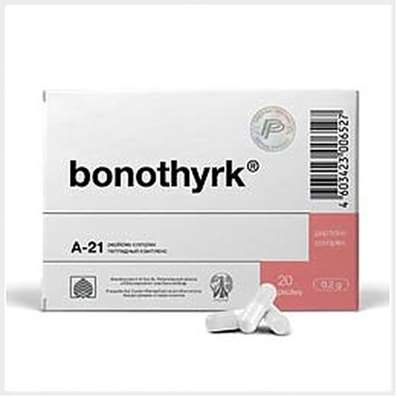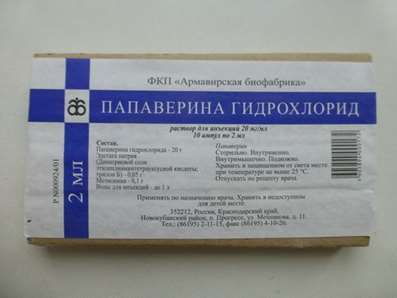Instruction for use: Celecoxib (Celecoxibum)
I want this, give me price
Pharmacological group
NSAIDs – Coxiba
Nosological classification (ICD-10)
M06.9 Other specified rheumatoid arthritis
Rheumatoid arthritis,Pain syndrome in rheumatic diseases, Pain in rheumatoid arthritis, Inflammation in rheumatoid arthritis, Degenerative forms of rheumatoid arthritis, Children's rheumatoid arthritis, Exacerbation of rheumatoid arthritis, Acute articular rheumatism, Rheumatic arthritis, Rheumatic polyarthritis, Rheumatoid arthritis, Rheumatic polyarthritis, Rheumatoid arthritis, Rheumatoid arthritis of active course, Rheumatoid arthritis, Rheumatoid polyarthritis, Acute rheumatoid arthritis, Acute rheumatism
M07.3 Other psoriatic arthropathies (L40.5 +)
Arthritis psoriatic, The generalized form of psoriatic arthritis, Psoriatic arthritis
M19.9 Arthrosis, unspecified
Change in brush with osteoarthritis, Osteoarthritis, Osteoarthrosis, Arthrosis of large joints, Pain syndrome in osteoarthritis, Pain syndrome in acute inflammatory diseases of the musculoskeletal system, Pain syndrome in chronic inflammatory diseases of the musculoskeletal system, Deforming arthrosis, Deforming osteoarthritis, Deforming osteoarthritis of joints, Osteoarthritis in the acute stage, Osteoarthritis of large joints, Acute pain syndrome with osteoarthritis, Post-traumatic osteoarthritis, Rheumatic osteoarthritis, Spondylarthrosis, Chronic osteoarthritis
M45 Ankylosing spondylitis
Ankylosing spondylarthrosis, Marie-Strumpel disease, Ankylosing spondylitis, Pain syndrome in acute inflammatory diseases of the musculoskeletal system, Pain syndrome in chronic inflammatory diseases of the musculoskeletal system, Bechterew's disease, Ankylosing spondylitis, Diseases of the spinal column, Rheumatic spondylitis, Bechterew-Marie-Strumpel disease
Code CAS 169590-42-5
Characteristics of Celecoxib
NSAIDs. Selective inhibitor of COX-2.
Pale yellow substance. Molecular weight 381.38.
Pharmacology
Pharmacological action - anti-inflammatory, antipyretic, analgesic.
Selectively inhibits COX-2 and blocks the formation of pro-inflammatory PG. In therapeutic concentrations, it does not inhibit COX-1. In clinical trials, in healthy volunteers, celecoxib in single doses up to 800 mg and multiple 600 mg twice daily for 7 days (above recommended therapeutic doses) did not reduce platelet aggregation and did not increase bleeding time. Suppression of the synthesis of PGE2 can lead to fluid retention due to increased reabsorption in the thick ascending segment of the Henle loop and, possibly, other distal areas of the nephron. PGE2 inhibits the reabsorption of water in collecting tubes, preventing the action of antidiuretic hormone.
When ingestion is rapidly absorbed, Cmax is reached after about 3 hours. Eating, especially rich in fats, slows down absorption. The degree of binding to plasma proteins is 97%. The equilibrium concentration is reached by the 5th day. Evenly distributed in tissues, penetrates through the BBB. Biotransformiruetsya in the liver mainly with the participation of the isoenzyme CYP2C9 cytochrome P450. T1 / 2 - 8-12 hours, total clearance - 500 ml / min. It is in the form of inactive metabolites, mainly through the gastrointestinal tract, a small amount (less than 1%) of unchanged celecoxib is found in the urine.
Carcinogenicity, mutagenicity, effects on fertility
There was no carcinogenic effect of celecoxib in a two-year study in rats when administered orally at doses up to 200 mg / kg in males and 100 mg / kg in females (approximately 2 and 4 times the exposure in humans measured by AUC0-24 at a dose of 200 mg twice daily) and in mice at oral doses up to 25 mg / kg in males and 50 mg / kg in females (approximately equal to human exposure as measured by AUC0-24 at a dose of 200 mg twice daily).
Celecoxib showed no mutagenicity in the Ames test and in the test on Chinese hamster ovary cells, there was no clastogenicity in the test for chromosomal aberrations on Chinese hamster ovary cells and in a micronuclear test on the bone marrow of rats in vivo.
Celecoxib had no effect on fertility in male and female rats at oral doses up to 600 mg / kg / day (approximately 11 times higher than that in humans based on AUC0-24 at a dose of 200 mg twice daily).
Use of Celecoxib
Rheumatoid arthritis, osteoarthritis, ankylosing spondylitis, psoriatic arthritis.
Contraindications
Hypersensitivity, incl. to other NSAIDs, allergic reactions to sulfonamide-containing drugs, "aspirin" triad (combination of bronchial asthma, recurrent nasal polyposis and paranasal sinuses and intolerance to acetylsalicylic acid and other NSAIDs, including COX-2 inhibitors), peptic ulcer in the acute stage or bleeding from the gastrointestinal tract, colitis, chronic heart failure (II-IV NYHA), coronary artery bypass surgery, coronary artery disease (clinically confirmed), peripheral arterial disease and severe cerebrovascular disease, Renal / renal failure, pregnancy (III trimester), lactation.
Restrictions for use
Peptic ulcer disease of the stomach and duodenum (including in the anamnesis), gastrointestinal hemorrhage in the anamnesis, simultaneous reception with warfarin and other anticoagulants, inhibitors of CYP2C9, edema, fluid retention, hepatic insufficiency of moderate severity, age of 18 years.
pregnancy and lactation
Teratogenic effects. At oral doses ≥150 mg / kg / day (approximately 2 times the exposure in humans at a dose of 200 mg twice daily for AUC0-24) in rabbits treated with celecoxib during organogenesis, celecoxib caused an increase in the frequency of heart wall defects rare complication) and fetal deformation of the ribs, sternum. At oral doses ≥30 mg / kg / day (approximately 6 times the exposure in humans at a dose of 200 mg twice daily in the AUC0-24 evaluation), a dose-dependent increase in the incidence of diaphragmatic hernia was observed in rats treated with celecoxib during organogenesis.
Adequate and strictly controlled studies in pregnant women have not been conducted. When pregnancy is possible, if the expected effect of therapy exceeds the potential risk to the fetus.
Nonteratogenic effects. Celecoxib caused pre- and postimplantation losses and reduced embryo / fetal survival in rats at oral doses ≥50 mg / kg / day (approximately 6 times the exposure estimated by AUC0-24 at a dose of 200 mg twice daily). These changes are connected, apparently, with the inhibition of GH synthesis and are not the result of a permanent change in reproductive function in females.
Studies on the effect of celecoxib on the closure of the arterial duct in humans have not been carried out. The use of celecoxib in the third trimester of pregnancy should be excluded.
The effects of celecoxib on labor and delivery in humans are unknown.
Action category for fetus by FDA - S.
Celecoxib is excreted into the milk of lactating rats, while concentrations in milk are similar to those in plasma. It is not known whether celecoxib penetrates the breast milk of women, therefore, breastfeeding should be stopped for the duration of treatment or avoided during breastfeeding.
Side effects of Celecoxib
On the part of the digestive tract: 0.1-1.9% - constipation, diverticulitis, dysphagia, belching, esophagitis, gastritis, gastroenteritis, gastroesophageal reflux, hemorrhoids, hernia of the esophagus, diarrhea, melena, anorexia, increased appetite, dry mouth, stomatitis , tenesmus, dental diseases, vomiting, impaired liver function, increased AST and / or ALT; <0.1% is cholelithiasis.
From the cardiovascular system and blood (hematopoiesis, hemostasis): 0.1-1.9% - aggravation of arterial hypertension, palpitation, tachycardia, angina pectoris, coronary artery disease, myocardial infarction, thrombocythemia, anemia; <0.1% - syncope, congestive heart failure, atrial fibrillation, stroke, peripheral gangrene, thrombophlebitis, thrombocytopenia.
From the nervous system and sense organs: asthenia, weakness, cramps in the legs, increased muscle tone, hypoesthesia, migraine, neuralgia, neuropathy, paresthesia, vertigo, anxiety, depression, nervousness, drowsiness, hearing impairment, deafness, ear pain, tinnitus , change in taste, blurred vision, cataract, conjunctivitis, eye pain, glaucoma; <0.1% - ataxia, suicide.
From the musculoskeletal system: arthralgia, bone disease, accidental fracture, myalgia, tendonitis, stiff neck.
On the part of the genitourinary system: dysmenorrhea, vaginal bleeding, vaginitis, prostate diseases, albuminuria, cystitis, dysuria, hematuria, increased urinary frequency, kidney stones, urinary incontinence, urinary tract infection; <0.1% - acute renal failure.
On the part of the respiratory system: 0.1-1.9% - otitis media, bronchitis, bronchospasm / aggravation of bronchospasm, cough, dyspnoea, laryngitis, pneumonia; <0.1% is pulmonary embolism.
On the part of the skin: alopecia, dermatitis, contact dermatitis, nail diseases, photosensitivity reactions, erythematous rash, maculopapular rash, skin diseases, dry skin, hypertrophy of the stratum corneum, increased sweating, cellulite.
Allergic reactions: aggravation of allergies, itching, urticaria, generalized edema, edema of the face.
Other: influenza-like symptoms, pain syndrome, incl. chest pain; fever, hot flushes, increased blood sugar, increased blood urea nitrogen concentration, increased non-protein nitrogen, increased creatinine phosphokinase, hypercreatininemia, diabetes mellitus, hypercholesterolemia, hypokalemia, weight gain, mammary fibroadenoma, mammary gland, mammary gland, ecchymosis, nasal bleeding, Herpes simplex, Herpes zoster, fungal infection, candidiasis, incl. genital, soft tissue infection, viral infection; <0,1% - sepsis, sudden death.
Side effects noted only in postmarketing studies with a frequency of <0.1% are vasculitis, deep vein thrombosis, agranulocytosis, aplastic anemia, pancytopenia, leukopenia, hypoglycemia, hyponatremia, agevia, loss of smell, fatal intracranial hemorrhage, hepatitis, jaundice, hepatic insufficiency, aseptic meningitis, interstitial nephritis, erythema multiforme, exfoliative dermatitis, Stevens-Johnson syndrome, toxic epidermal necrolysis, anaphylactoid reactions, angioedema.
Interaction
It has been established in vitro that celecoxib is an inhibitor of the cytochrome P450 isoenzyme CYP2C9, so there is a possibility of drug interaction with other drugs that are biotransformed with this isoenzyme. In vitro studies have shown that celecoxib, although not a substrate of the CYP2D6 isoenzyme, inhibits it, so there is a potential for in vivo interaction with drugs metabolized with this isoenzyme.
NSAIDs can reduce the hypotensive effect of ACE inhibitors, which should be taken into account when concurrent use of celecoxib and ACE inhibitors. NSAIDs can reduce the natriuretic effect of furosemide and thiazide diuretics by reducing renal GHG synthesis. The simultaneous use of celecoxib and acetylsalicylic acid in low doses is possible, but it should be borne in mind that with this combination, the risk of ulceration of the gastrointestinal tract and other complications increases, in comparison with the use of one celecoxib. Due to the lack of action on platelets, celecoxib can not be considered a substitute for acetylsalicylic acid for the prevention of cardiovascular diseases.
Fluconazole (CYP2C9 inhibitor) increases the plasma concentration of celecoxib (fluconazole inhibits the metabolism of celecoxib), so if necessary, such combination should be given celecoxib at the minimum recommended dose.
With the simultaneous use of celecoxib (200 mg twice daily) and lithium preparations (450 mg twice daily), the plasma lithium plasma level in the equilibrium state increases by 17% compared to that of patients receiving lithium preparations alone. Patients receiving lithium preparations should carefully monitor the serum Li + concentration after initiating celecoxib therapy and after changing its dosage regimen.
It has no significant effect on the pharmacokinetics of methotrexate.
Antikoagulant activity should be carefully monitored, especially in the first few days after initiating or modifying celecoxib therapy in patients receiving warfarin or similar drugs (increased risk of bleeding).
Overdose
No overdose of celecoxib was reported in clinical trials. Doses up to 2400 mg / day for up to 10 days in 12 patients did not lead to serious toxicity. Symptoms of acute overdose of NSAIDs: drowsiness, lethargy, epigastric pain, nausea, vomiting, possible bleeding from the gastrointestinal tract, rarely - hypertension, acute renal failure, respiratory depression, coma, anaphylactoid reactions may occur.
Treatment: the induction of vomiting and / or the administration of activated charcoal (60-100 g to adults, 1-2 g / kg to children) and / or osmotic laxatives can be shown within 4 hours after ingestion. It is necessary to carry out symptomatic and maintenance therapy. A specific antidote was not found. Forced diuresis, alkalization of urine, hemodialysis or hemoperfusion are not effective due to high binding to proteins. There is no data on the removal of celecoxib from the body by hemodialysis, but based on the fact that binding to proteins is> 97%, it is unlikely that hemodialysis will be effective.
Routes of administration
Inside.
Precautions for Celecoxib
Risk of gastrointestinal complications. NSAIDs, including celecoxib, cause an increased risk of serious GI side effects, including bleeding, ulceration and perforation of the stomach or intestines. These complications can occur at any time using NSAIDs without prognostic symptoms, a fatal outcome is possible. A higher risk of serious complications from the gastrointestinal tract is in elderly patients, the likelihood of these complications increases also with prolonged use.
In elderly patients, in patients with a reduced body weight, with symptoms (mild and moderate) of heart failure and in violation of the liver function of moderate severity, treatment should be started with minimal doses.
Some patients taking celecoxib had fluid retention and swelling, so it should be used with caution in patients with impaired heart function and other conditions predisposing to fluid retention.
During treatment, it is necessary to monitor the picture of peripheral blood and the functional state of the liver and kidneys. If it is necessary to determine 17-ketosteroids, treatment should be discontinued 48 hours before the study.
It is necessary to refrain from potentially dangerous activities requiring increased attention, since there may be a violation of accommodation and lengthening the reaction time.

 Cart
Cart





